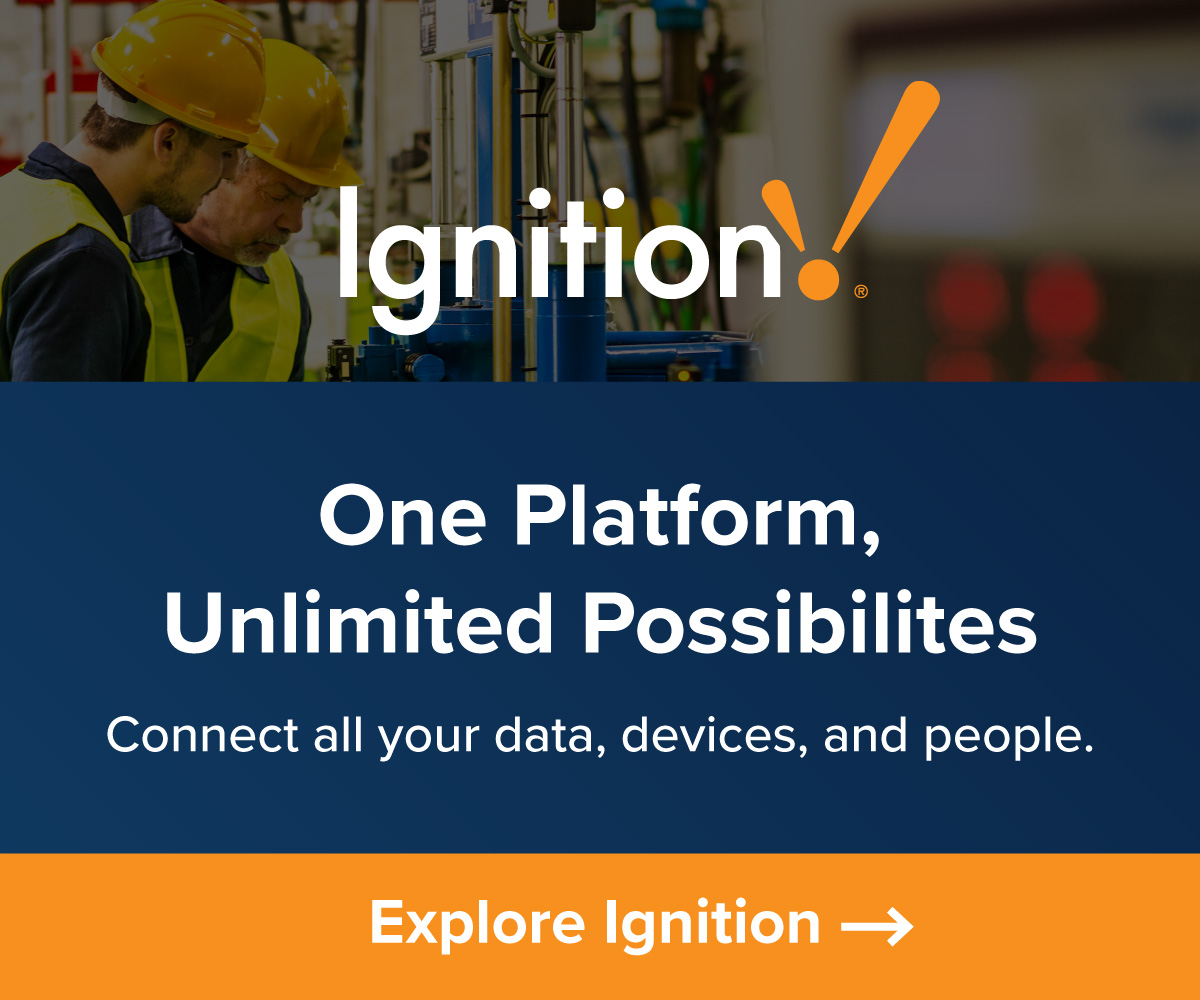by Gary Mintchell | Mar 31, 2025 | Networking, News, Organizations, Process Control
The first news from Hannover this morning concerns additions to EtherNet/IP device profiles. Delegates discussed continued updates for process devices at the annual meeting a couple of weeks ago.
ODVA announced that level sensors are the latest option for process device profiles to be added to The EtherNet/IP Specification. Process device profiles help users to reduce complexity and to more quickly install new devices in the event of an unplanned replacement. Standardized semantics and scaling for process variables and diagnostics that are made possible by process device profiles for EtherNet/IP significantly improve vendor interoperability and prepare process data for use with edge and cloud analytics. Device profiles are now available for level measurement along with Coriolis flow, electromagnetic flow, vortex flow, standard pressure, scaled pressure, Resistance Temperature Detector (RTD) and thermocouple temperature sensors. Standardized data including process variables, diagnostics, and totals enable easier access to critical data to help optimize operations. The addition of level sensors to the suite of process device profiles further increases the value of the EtherNet/IP ecosystem.
The goal of process device profiles is to enable a device replacement experience that is as seamless as possible. Plug and play type capabilities for process field devices reduce the need for maintenance workers to be electronic device or Ethernet experts, and they make it possible to increase the efficiency of planned turnarounds while lowering the amount of unplanned downtime. The EtherNet/IP process device profile for level transmitters can be applied to devices that rely on free wave, guided wave, capacitive, magnetostrictive, radiometry, and buoyancy measuring technologies. Additionally, NAMUR NE 107 diagnostics are available for level transmitters that use free wave, guided wave, and radiometry sensor technology approaches. The introduction of level measurement process device profiles, in addition to temperature, flow and pressure, supports end users in being able to integrate EtherNet/IP capable devices in critical environments, to replace sensors regardless of vendor, and to support a harmonized data structure.
“The addition of level sensor support to the suite of EtherNet/IP process device profiles further promotes device interchangeability between vendors and supports easier integration with additional device types,” said Dr. Al Beydoun, President and Executive Director of ODVA. “New level measurement process device profiles for EtherNet/IP network-capable level sensors support NE 107 diagnostics and are aligned with the Process Automation – Device Information Model (PA-DIM). Process device profiles for EtherNet/IP reduce the commissioning and maintenance burden of adopting Ethernet-capable devices and provide a standardized information model foundation to enable usage of advanced edge and cloud analytics approaches, including AI.”
Standardized access to process variables with semantics and scaling that align with PA-DIM and critical diagnostics such as NAMUR NE 107 status signals are the foundation to the future of advanced analytics and optimization within process automation. Process device profiles for EtherNet/IP provide valuable standardization and a growing ecosystem of supported sensors to allow for quicker device installation and replacement, improved asset status, and easier integration into higher level data management systems. ODVA continues to invest in adapting EtherNet/IP to the full requirements of the process industries through support of technologies including Ethernet-APL, PA-DIM, NAMUR, FDI, and process device profiles.
Obtain the latest version of The EtherNet/IP Specification including level measurement process devices profiles for EtherNet/IP.
by Gary Mintchell | Feb 24, 2025 | Asset Performance Management, Data Management, Process Control, Workforce
I have had a busy month. Good think I didn’t take four days to travel to Orlando. I’m wrapping up my last interview from there today. There are a few more pending if the media relations person can find a way to coordinate calendars.
This interview is with Kim Fenrich, ABB Global Product Marketing Manager, Process Automation, PC. He brought up the term “Digital Habitat”—something not found on the ABB website, but still an interesting concept.
The problem statement recognizes new people entering the industrial workforce. Many of these will not have much background in process operations. Meanwhile our digital technologies contain immense amounts of data that could be used to guide operators toward better decisions.
Fenrich brought a concept called Digital Habitat. This is the area alongside the core process control. This core contains monitoring and optimization. It houses process data. The data then gathers at the edge. In the ABB architecture, data at the edge becomes freely available to other applications, such as asset management and optimization.
Not all data is created equally. Some are “dirty” data that must be cleaned before using. Some is good data from trusted sources with solid metadata. These many applications ride atop the system to run analytics, support decision-making, optimize operations. Sometimes operators are new lacking operations experience and knowledge. Data science to the rescue to clean up and provide interfaces to support these new workers. Sometimes the data science supports engineers working in maintenance and reliability performing predictive analytics or enhancing asset management.
ABB had a suite of applications called the Augmented Operator. The system does pattern mining. Perhaps the operator sees something new. They can ask the system, “Have you seen this before? If so, what happened and how was it resolved?” This greatly helps the younger generation operator.
Should the situation be new to the system, then it can run simulations to predict outcomes and resolutions.
In short, the system:
- Freeing up operators time for more meaningful work such as using data and advanced analytics to optimise processes for energy efficiency and carbon emission savings.
- Enabling early warning of potential failure with AI-powered systems that can use real and historic data to offer troubleshooting solutions, much like a virtual assistant.
- Workflow simulation to check outcomes and for training and augmented reality (AR) headsets to access experts working offsite.
This is from the ABB web site. The next step to achieve this reality is to fuse together the Distributed Control Systems’, operations technology and real-time control system with the Edge and newer IT technology, such as machine learning and AI. As well as incorporating historical data and the mining of other data sources for pattern recognition and knowledge extraction. This will shift the automation system beyond only real time control to one that allows the operator to augment operations from day-to-day. It will be a journey, but humans working with technological systems to augment their cognitive capabilities can amplify their potential and provide huge value to both the workforce and the industry at large – as well as attract new generations to the sector.
by Gary Mintchell | Feb 21, 2025 | Process Control
More Schneider Electric news from Orlando. In brief:
- Using artificial intelligence (AI) to enhance risk assessments and process safety studies
- Semi-automate safety lifecycle activities
Schneider Electric announced its patent to leverage artificial intelligence (AI) to help reduce the likelihood process safety hazards. The innovation automatically, or semi-automatically, analyzes potential process hazards and validates protection mechanisms in an industrial process. It is then possible to prevent hazards using an analysis tool by engaging protective mechanisms to the process.
This latest patent from the EcoStruxure Triconex Safety team has the potential to identify potential hazards and safeguards in a process.
Process safety management can then take advantage of industrial, real-time data to revalidate HAZOP studies to prevent industrial hazards and save lives.
This patent is a part of a strategic initiative to enhance functional safety using AI. It is now possible to simulate hazards, with varying conditions, and then attempt to prevent dangerous conditions by using a process hazard analysis tool to generate protective mechanisms to the process.
Three other Schneider Electric patents incorporating AI into functional safety lifecycle are currently pending. News of the innovation comes as there is a growing interest in combining human ingenuity in functional safety analysis with strategic implementation of reenforced learning to prevent hazardous scenarios in industrial automation.
by Gary Mintchell | Feb 21, 2025 | Process Control, Technology
People often remind me of problems I tried to solve decades ago now made possible through technology advances and creativity.
Some 30 years ago, I tried to concept a system where we could monitor all the electrical power buses in a plant using the data to reveal potential problems with machines along the production line.
It didn’t fly.
One of the few companies that I would expect to be able to put that sort of system into operation would be Schneider Electric. I had the opportunity to interview Manishi Tiwari, Global Director of EcoStruxure Power and Process at Schneider Electric during the recent conference held in Orlando.
Her task is to lead the teams that will enable the sort of system I had envisioned with a customer way back in 1995. The technology now exists. Now the leadership exists to bring it all together.
She told me that about half of her 17-year career at Schneider Electric was in the process business with the other half working in the electrical power business.
Industries require electrical power to operate. But those systems are not built for information exchange between it and process control. Engineers must connect these systems considering latency, reliability, and continuity. Many systems are upgrades to brownfield sites. These most likely require upgrades to electrical equipment such as circuit breakers, relays and other such equipment. How these new components interact with the process must be carefully considered.
Conversely, process system upgrades, say a change in capacity, will affect the electrical power system. These must be studied and considered at design.
Cyber security also must be engineered into the system. Then steps must be taken to improve information to the operator to make their job better.
Schneider Electric not only has expertise in power systems and process systems, but it also has the AVEVA software portfolio to finish the loop.
I must add that in 27 years of interviewing I’ve seldom had a conversation where the other person jumped right in with background, problem statement, possible solutions, and, oh, with a minimum of marketing jargon. And when I sat down to write, I could construct a logical story.
by Gary Mintchell | Oct 14, 2024 | Automation, Data Management, Process Control
The automation side of Yokogawa has not contacted me for years. I’ve lost all my contacts there. Recently some news has come my way. This news incorporates a lot of things currently receiving media attention—data integration and visualization solution that incorporates robotic process automation (RPA).
Yokogawa Electric Corp. has announced the global release in all markets other than Japan of OpreX Intelligent Manufacturing Hub. By utilizing robotic process automation (RPA) implemented in a low-code / no-code environment or through customization by Yokogawa, this data integration solution can significantly reduce reporting time. OpreX Intelligent Manufacturing Hub covers the full range of key performance indicators (KPIs), workflows, and reporting at every level of the organization, from the C-suite to the plant floor, and employs a single database to integrate and display on dashboards data that customers need to make the right decision at the right time.
Main Features
- User-friendly dashboards that visualize data for decision makers at each layer of the organization
- Reduction in reporting time
The OpreX Intelligent Manufacturing Hub also allows for the drilling down through data to find root causes and gain insights. It is suited for use in a wide variety of industries, from oil & gas to chemicals and pharmaceuticals.
Along with this solution, Yokogawa will provide holistic support and services through its global network that are essential for the success of any intelligent business tool project, including definition of specifications, training, maintenance, and technical support.
by Gary Mintchell | Oct 9, 2024 | Automation, Events, News, Process Control
I didn’t rate an invitation to this year’s Honeywell User Group. They have reorganized. All my marketing contacts are evidently gone. I checked in to the only source I have, Control Global, who somehow maintains contact and once again published the email show daily. The link is to one of the days of the show.
Looks like the highlight from the keynote is that once again Honeywell Process is reorganizing. They are trying to reflect the latest hype in the industry—AI and cybersecurity. Indications filtering to me hint at the relegation of Honeywell Connected Enterprise (whose user conference last year was the same dates as HUG this year) as a business unit. It’s all hard to tell what’s up with the major automation suppliers in this era.
From Control Global’s editor in chief Len Vermillion:
In case anyone still had any doubts, Pramesh Maheshwari, president of Honeywell Process Solutions, stepped on stage and matter-of-factly reminded an audience full of process control professionals of one simple fact: digital solutions will be at the forefront of the industrial future.
Maheshwari and other Honeywell business leaders mapped out the company’s business vision to open this week’s 2024 Honeywell Users Group (HUG) Conference at the Hilton Anatole in Dallas.
Their vision focused on three key trends driving the future of the global industrial sector, each requiring a proactive approach utilizing new and existing technologies that will help businesses stay “ahead of the curve”—the event’s main theme. Those key trends include artificial intelligence (AI), cybersecurity and the energy transition.
“Imagine a world that is incredibly efficient. That’s the power of AI. Imagine a world that is safer. That’s the power of cybersecurity. Imagine a world that is cleaner. That’s the power of energy transition,” Maheshwari said. “Finally, imagine a world that is a better place to live. That is what it means to stay ahead of the curve.”





